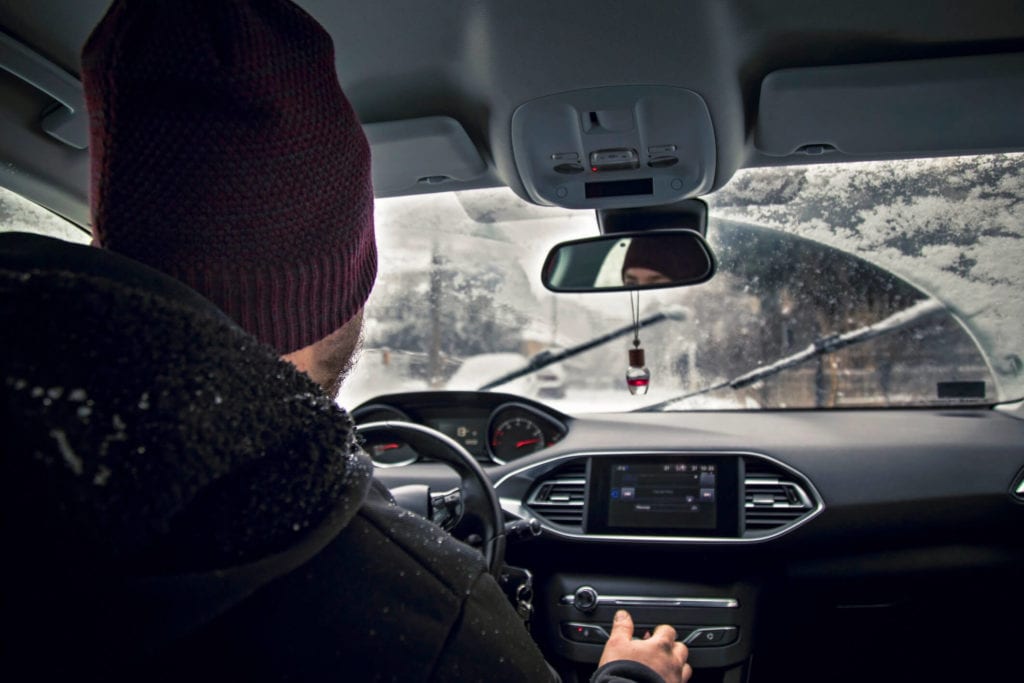 Freezing temperatures are coming. While it doesn’t get too terribly cold here in the southwest, we do have some cold snaps that may even bring snow to our region. On those very cold mornings, your car may be just as hesitant to start as you were getting out of your warm bed. While we’ve discovered ways to endure the cold winter months by wearing nice, comfy layers of clothes, drinking hot cocoa, and wearing boots to keep our toes warm, cars? Not so much. Cars don’t care for the cold at all, actually.
Freezing temperatures are coming. While it doesn’t get too terribly cold here in the southwest, we do have some cold snaps that may even bring snow to our region. On those very cold mornings, your car may be just as hesitant to start as you were getting out of your warm bed. While we’ve discovered ways to endure the cold winter months by wearing nice, comfy layers of clothes, drinking hot cocoa, and wearing boots to keep our toes warm, cars? Not so much. Cars don’t care for the cold at all, actually.
Cars struggle to start up when it’s cold for three reasons:
- Colder weather causes the oil to thicken, which increases friction and makes it harder for the engine to spin.
- Cold affects the chemical reaction produced by the battery, reducing the output of power.
- Though rare, if moisture is in the already thin fuel lines, it can freeze causing a blockage and prevent the engine from starting.
How to Start a Car in the Cold
- Turn everything off before you exit your vehicle. Any electrical accessories including the radio, headlights, heater, and even your phone charger use up battery power. By turning them off before you start your car, you’re giving your battery the extra boost it may need to get the engine started. Once started, allow the engine to run giving time for the alternator to charge before using any accessories, to reduce the risk of draining the battery.
- Check the battery and connections. Cold weather has an effect on battery performance. Loose or corroded connections can reduce your battery’s chance of producing power. If you identify signs of corrosion, clean the area with a soft cloth or a toothbrush. Once clean, check to ensure cables and clamps are tight. Loose cables prevent the current from the proper flow. Lastly, have your battery tested to ensure it’s maintaining a decent charge.
- Use the correct engine oil. Does the engine sound like it wants to start but is really struggling when you try starting the car? Check your oil. An engine low on oil or the wrong viscosity can prevent the oil from flowing through the engine. The W on oil refers to the winter weather rating. The lower the number next to the W, the better the oil will operate in cold temperatures.
- Fill up your gas tank. Though moisture in the fuel lines may cause blockages from freezing, fuel doesn’t freeze as easily. In fact, gasoline is able to maintain its liquidity even in freezing temperatures. Full gas tanks make fuel lines more resistant freezing.
- Get a jump start. If after trying all of the above and your vehicle still struggles to start, you may need a jump start. At this point, whether you’re able to start your vehicle by with the jump or not, contact your local auto repair center for assistance. They’ll help determine why your vehicle continues to struggle at startup.
Warming Up Your Car
In the past, older cars needed warming up to keep from stalling out. This is because most vehicles were equipped with carbureted engines. Now that most modern vehicles are using combustible engines, warming up your car in the morning is unnecessary. In fact, cars that are left to idle not only waste fuel, but they also release unnecessary emissions into the environment.
Vehicles today can be driven just moments after start-up. By driving right after starting up, the engine will warm up naturally allowing you to turn on the heat sooner, reduce emissions, and make your vehicle more fuel-efficient. A good rule of thumb is to count to five once your car is started. By that time, your vehicle as already allowed the oil to flow throughout the engine. It is recommended, however, that you maintain a decent speed until the vehicle is able to reach a normal operating temperature, which may take longer in colder weather.
Here are a few ways you can protect your car in cold weather:
- Begin driving less than 30 seconds after it’s been started.
- Maintain a moderate speed for the first few minutes until the vehicle reaches optimal operating temperature.
- Keep an ice scraper handy in the event you need to clear ice from your windshield instead of waiting for the defroster.
- If possible, park your vehicle in a garage to help increase engine and cabin temperatures as well as protect the exterior from weather conditions.
- Limit immediate use of accessories including the radio, seat warmers, and other items that may place strain on your battery or decrease fuel economy.
- Recommendations for driving in cold weather may vary by make and model. Refer to your owner’s manual on how to get your specific car to adapt to cold weather.
